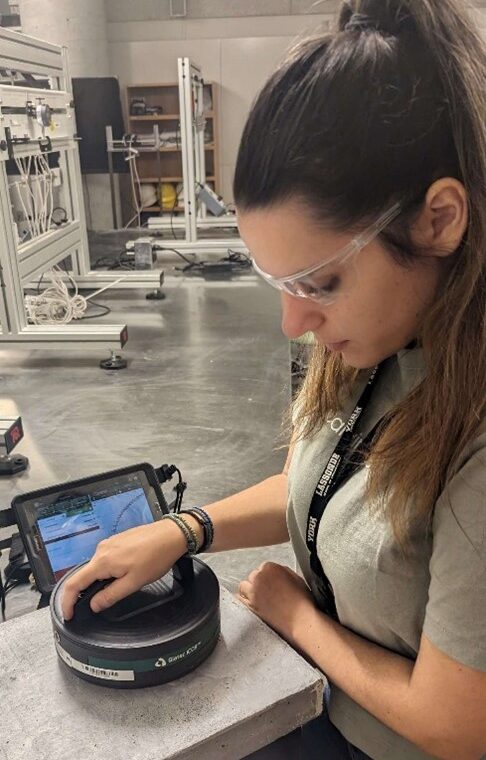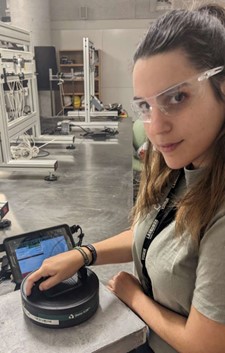Research at Lassonde is transforming health monitoring methods for infrastructure
Tags:

Concrete is the second most consumed material in the world, and it is especially valuable in the construction of foundations, bridges, buildings and more. To meet growing industry needs, this popular material continuously undergoes enhancements to improve its performance, durability and sustainability.
Zoi Ralli, postdoctoral fellow under the supervision of Professor Stavroula Pantazopoulou in the Civil Engineering Department at York University’s Lassonde School of Engineering, is joining these efforts by exploring the capabilities of a novel, nano-engineered ultra high-performance concrete (UHPC), which allow the material to achieve wireless and self-sensing structural health monitoring.
Much like people routinely visit the doctor to screen for issues and maintain their health, infrastructure undergoes structural health monitoring for similar purposes. Valuable information can be gathered about underlying damage, condition, and overall strength of infrastructure, helping inform the appropriate treatment or preventative action to maintain safety and performance.
“Structural health monitoring is very important for assessing the status of infrastructure,” says Ralli. “However, current techniques use external sensors that are either embedded or attached to specific locations of the structure, preventing continuous assessment. These methods also require a lot of equipment, wires and complicated procedures, which make it difficult to assess the condition of infrastructure in remote or inaccessible sites such as bridges or tunnels.”

Ralli’s proposed wireless method on self-sensing UHPC is a promising solution for these challenges with the potential to transform the future of structural health monitoring. This research is being conducted in collaboration with Professor Pantazopoulou and UHPC-supplier ceEntek Pte Ltd., to establish a first-of-its-kind method with groundbreaking results.
“The UHPC material we used for this research was nano-engineered by ceEntek Pte Ltd. and contains carbon nanofibers which, besides enhancing the mechanical behaviour of the material, also enable the concrete to have self-sensing abilities,” says Ralli. “By exploiting these self-sensing abilities, the material can evaluate its own condition and any possible degrees of damage. What is most important about this work is that we found a way to achieve this structural evaluation wirelessly – this has never been done with UHPC.”
The carbon nanofibers which exist throughout the UHPC are key players in this process. When a load is applied to the material, the carbon nanofibers experience a change in electrical resistivity which corresponds to a change in the stress state within the material and can help indicate its overall condition. For example, an abrupt increase in the electrical resistance is consistent with the presence of cracks in UHPC.
To achieve wireless evaluation of UHPC, Ralli conducted electromechanical tests using an instrument called iCOR which was developed by Giatec Inc. to measure concrete corrosion and resistivity. The instrument measures the electrical properties of UHPC and through Bluetooth connection, it sends the data to a tablet which has an application that analyzes the measurements to help determine UHPC health status.


Zoi Ralli, wirelessly measuring the electrical resistivity of nano-engineered UHPC using Giatec iCOR®
This multidisciplinary work combining civil, mechanical and electrical engineering principles has a potential to significantly improve the standard of structural health monitoring methods. The wireless, self-sensing approach will also assist with early damage detection, expediting prevention and treatment measures to improve the safety, function and longevity of infrastructure.
In the near future, Ralli will prepare her research for applications in real-world settings through a series of additional tests.
“We want our work to reflect realistic conditions as closely as possible,” she says. “So, we will need to test this novel, multifunctional material against harsh environments, such as freezing or de-icing chemicals, to see if the self-sensing ability of the nano-engineered UHPC is affected.”